Prahlad Sonowal, a farmer from north-east India, struggled through a surging, chest-high flood with seven frightened cows in almost pitch darkness.
Just minutes earlier he had woken on the mud floor of his simple one-storey home, surrounded by water. The nearby river Jiadhal had burst its banks, triggering one of the most severe flash floods in recent memory. But instead of rushing to safety with the rest of his family, he put himself in serious danger to rescue his animals.
Many others in the village of Naruathan, where people depend on animals for their food and livelihoods, did the same thing that night in 2012. Prahlad managed to reach higher ground with six of his cattle but was unable to stop one of his bulls, smaller and weaker than the rest, drifting from the herd and into a current that dragged him downstream to his death.
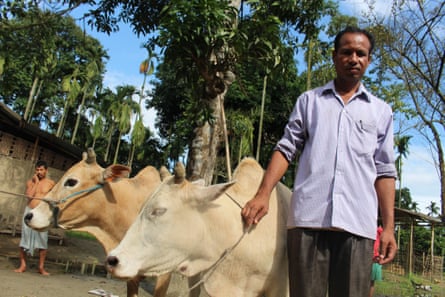
“I was helpless,” says Prahlad. “If I’d tried to save him I might have lost others.” Throughout the night he saw dozens more cows float past. Because of the darkness, and because the roaring torrent was loud enough to drown out the sound of cattle bellowing in distress, it was impossible to tell if they were dead or alive.
As flooding that summer devastated villages across Assam state, hundreds of other animals were swept away. Many that survived the initial surge fell ill or began to starve, wreaking havoc on local economies that cannot function without livestock and working animals.
Despite this, animals were largely neglected in the response to the floods. But in Dhemaji, the district where Prahlad lives and one of the most severely affected areas, World Animal Protection arrived to supply aid.
The group, formerly known as WSPA, has worked in disaster zones for decades and in recent years has ramped up efforts to convince governments and the global humanitarian community that protecting animals should form a crucial part of aid efforts.
Flooding across Assam
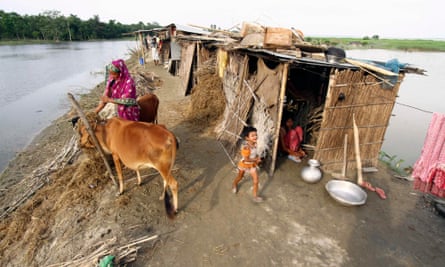
India’s then prime minister, Manmohan Singhone, declared the 2012 disaster “one of the worst floods in recent times”. Over 120 people died and six million were displaced as the enormous Brahmaputra river and its tributaries burst their banks, destroying bamboo homes, flooding thousands of acres of crops and triggering deadly landslides.
The Indian government’s response focussed entirely – and for obvious reasons – on humans. The air force sent helicopters to drop humanitarian supplies and airlift people to safety, while health workers battled to prevent outbreaks of typhoid and diarrhoea.
But World Animal Protection argues that while saving human life must be the priority, the animals that people depend on for their livelihoods should come a close second.

“Approximately 1.3 billion of the world’s poorest people depend on animals,” says Hansen Thambi Prem, the group’s disaster projects manager. “Protecting animals helps people rebuild their lives following a disaster.”
“We love our animals, they earn for us, we need them for ploughing the fields,” says Chandra Nath Sonowal, Prahlad’s uncle and village leader in Naruathan. About 15 curious villagers, including a woman with a burbling baby, had gathered to meet the journalist from the Guardian. We sat on Chandra’s porch, which looks out onto a copse of betelnut trees and is connected to the main road by a precarious footbridge made from their trunks. Most in the village of roughly 200 thatch-roofed houses use their livestock for food as well as income: “They need cows for their milk and chickens for eggs,” says Chandra.
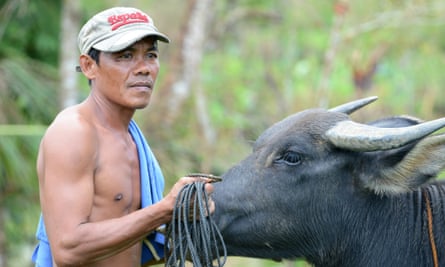
Animals are part of the landscape here; goats and cows mingle with traffic on bumpy roads and foraging pigs splash through shin-high water in people’s gardens. Naruathan is submerged by floods of varying severity every year, but in recent decades they have become increasingly damaging. “2012 was the worst year … it took us four months to recover,” says Chandras. “After the flood there were dead animals everywhere, it was unbearable.”
Across the state nearly two million livestock and working animals including pigs, goats, sheep, horses and cows were affected, more than 10% of the state’s total livestock population. Authorities confirmed more than 1,300 animals dead and another 1,592 as having been lost after being carried away by floods. A further 559 wild animals were killed, including 14 rare one-horned rhinos.
Straight after the flooding, World Animal Protection led a crew to Dhemaji to find out what communities needed; at a cost of £25,000 the NGO distributed about 119 tons of rice bran, set up eight temporary clinics to treat thousands of sick and injured livestock, and gave out medical kits containing syringes, surgical scissors and suturing needles to under-stocked government surgeries.
A cost-benefit analysis of the intervention commissioned by WAP demonstrated that it had saved India’s economy almost £2.5m, 96 times the £25,000 price tag of providing the aid. Tristan Knowles, one of the researchers at Melbourne-based Economists at Large, says that even at a conservative estimate, the response saved the economy £46 for every £1 spent.

Knowles and his co-author, Roderick Campbell, valued the animals by estimating the cost of goods like eggs, milk and meat that they would produce in the future. The average value of an 18-month-old pig, for example, was set at about £78.
Showing the benefits of animal welfare in hard figures helps get the attention of policymakers. “Certain people in government won’t necessarily respond if you say ‘We’re going to lose a thousand head of cattle’. They might say ‘Okay, that’s for the agriculture department or the livestock department’” explains Knowles.
“But if you then say that means economic output, GDP, may be lower in that region, then you get different people showing an interest.”
A similar approach may work in other countries. The international community is currently focussed on putting together a major agreement on improving disaster policy and after many years of fighting to get animals included, WAP have managed to obtain a pledge to “strengthen the protection of livelihoods and productive assets, including livestock, working animals, tools and seeds” included in what is currently known as the Sendai Framework.
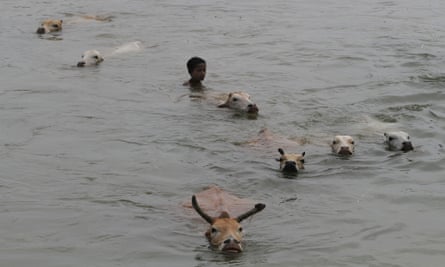
In Dhemaji at least, there is a long way to go. “We are still not prepared,” says Tankeswar Bharali, a field assistant at the animal clinic in Machkhowa, which hasn’t had its own veterinary doctor for six months. “If animals come in here with surgical problems, we can’t operate ourselves. So animals are going to die.”
He added: “We need a contingency plan, and medicines, and more staff, field assistants and doctors. And more cattle feed. There is supposed to be one vet for every 5,000 or 6,000 livestock in the region, but at the moment each vet is responsible for between 25,000 and 50,000.”
The other problem is infrastructure. “There aren’t enough raised platforms,” says Hamani Buragohain, of Seujia Pathar village. In the wake of the 2012 floods her family, along with more than 20 others whose houses were submerged, had to live crowded on a sheltered concrete plinth with their livestock for over a month.
The conditions were filthy, recalls Hamani, who lost six of her hens to diarrhoea while staying at the open-walled shelter, which normally serves as a community hall.
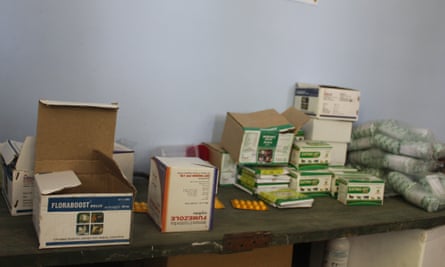
“There was lots of shouting and chaos. People argued over the clean water,” she says. “There was cow dung and urine just outside of the hall because it was too much trouble to leave there.”
World Animal Protection has helped fund the construction of 15 raised storage houses for animal feed. Keeping food in the buildings means villagers can feed their cattle during the days-long wait for outside aid.
But it’s not enough. “Sometime soon a flood bigger than the one in 2012 may come,” says Hamani. “We’re not ready for that.”
Join our community of development professionals and humanitarians. Follow@GuardianGDP on Twitter.
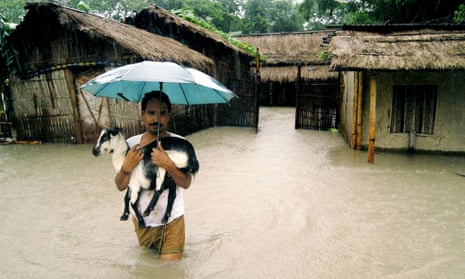
Comments (…)
Sign in or create your Guardian account to join the discussion